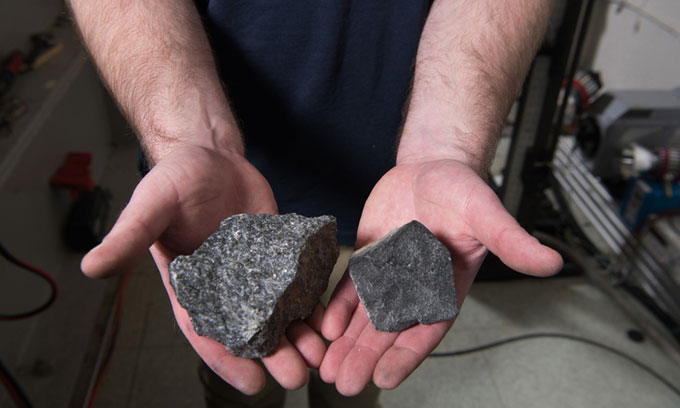NASA uses simulated Moon rocks and a gas gun to evaluate materials for future astronaut habitats and suits.
Engineers at NASA’s Glenn Research Center’s Ballistic Impact Laboratory are testing materials for the Artemis mission, which aims to return humans to the Moon, as reported by Futurism on September 14. The laboratory is equipped with a 12-meter-long gas gun capable of firing projectiles at speeds of approximately 3,300 km/h.

Simulated Moon rocks made from basalt used to test materials for spacesuits. (Photo: NASA).
The lunar surface presents an extremely harsh environment due to the lack of atmosphere, weak gravity, dust, and micrometeoroids (tiny fragments of rock or metal) traveling at speeds exceeding 35,400 km/h. These factors pose significant risks to astronauts, their habitats, and spacecraft.
“If an object is under pressure, a leak can have severe consequences, depending on the size of the hole and the rate of leakage. Conducting this type of ballistic impact testing is crucial for many of NASA’s space exploration and aviation missions, ensuring the reliability of equipment and materials,” said Mike Pereira, head of engineering at the Ballistic Impact Laboratory.
In the initial series of tests, the team evaluated materials that NASA is considering for habitats. These materials are designed to be relatively soft and flexible, yet very tough upon impact.
To assess potential materials and determine how many layers are needed to prevent micrometeoroid penetration, engineers fired projectiles at them using the gas gun. They also connected the gas gun to a vacuum chamber to eliminate air resistance, allowing for faster projectile speeds. Meanwhile, a system of sensors and high-speed cameras recorded how each material absorbed or deflected energy.
Additionally, the team is testing materials for spacesuits used during extravehicular activities, which occur on the lunar surface and in orbit. Understanding how materials respond to impacts is vital for astronaut safety, according to Pereira. To evaluate these potential materials, they employed a vertical drop test apparatus to drop simulated Moon rocks made from basalt onto them.
Experts are compiling data to identify the best materials that NASA can use for the Artemis mission. This is a crucial part of the journey to return humans to the lunar surface. The flight to the Moon inherently carries many dangers, and being struck by micrometeoroids while walking on the surface is not a pleasant experience.

















































